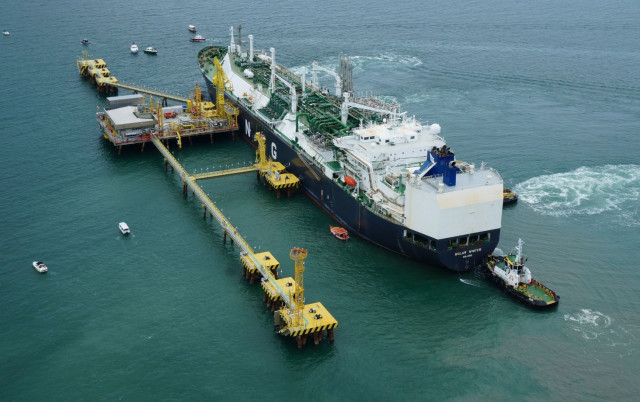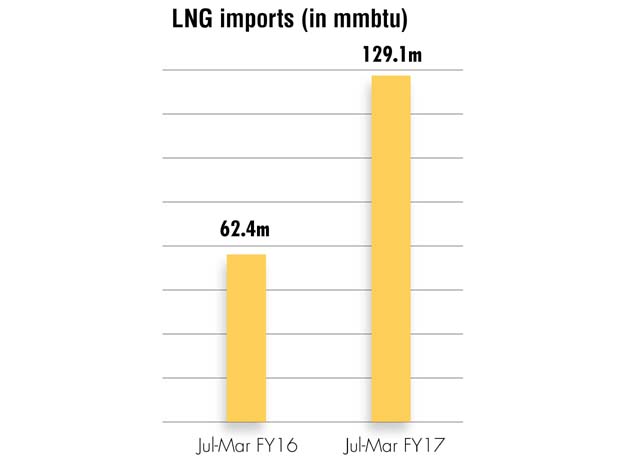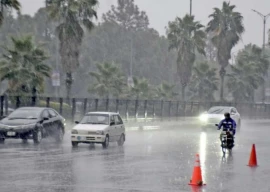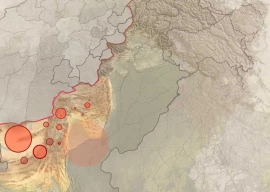
To lay the groundwork and streamline imported gas supplies, the public gas utilities have poured billions of rupees into building a new network of pipelines to reach more consumers.
At present, Pakistan has an extensive gas pipeline network spread over 12,202 km for transmission and 119,736 km for distribution of gas to cater to needs of more than 8.4 million consumers across the country.
The country produces about 4 billion cubic feet of gas per day, a level that has remained unchanged for years, though demand is growing consistently, particularly in winter.
According to the Pakistan Economic Survey 2016-17, LNG imports amounted to 129,092,714 million British thermal units (mmbtu) in July-March of financial year 2017 compared to 62,373,272 mmbtu in the corresponding period of previous year.

Average natural gas consumption was calculated at 3,654 million cubic feet per day (mmcfd), including 410 mmcfd of LNG from July 2016 to February 2017.
In July-February 2016-17, the two gas utilities - Sui Northern Gas Pipelines (SNGPL) and Sui Southern Gas Company (SSGC) - laid 814 km of transmission, 4,153 km of distribution and 1,162 km of service lines and connected 104 villages and towns to the supply network.
During the period, they invested Rs17,925 million in transmission projects, Rs11,183 million in distribution projects and Rs14,925 million in other projects, making total investment of about Rs44,033 million.
They provided 360,824 additional gas connections including 360,465 domestic, 339 commercial and 20 industrial connections across the country. It is expected that gas will be supplied to approximately 414,723 new consumers in the upcoming fiscal year 2017-18.
Gas utilities have planned to inject Rs12,702 million into transmission projects, Rs43,045 million into distribution projects and Rs8,462 million into other projects, taking total investment to Rs64,209 million in FY18.
Oil production
Though domestic production of crude oil rose in the current financial year, the country still mainly relied on oil imports, which grew to meet swelling energy needs.
Crude oil production in Pakistan reached 24.2 million barrels in July-March FY17, up slightly from 24 million barrels in the corresponding period of previous year.
However, oil resources in the country are not enough to quench the energy thirst of a growing economy. As a result, Pakistan has to import a large quantity of oil and oil-based products from Middle Eastern countries, especially from Saudi Arabia.
Pakistan imported 5.9 million tons of crude oil valuing $1.84 billion during July-March FY17 compared to 4.2 million tons worth $1.83 billion in the same period of previous year.
Though the import volume rose 40.5%, the value remained almost the same because of low international oil prices, which helped save critical foreign currency reserves.
Transport vehicles and power producers were major consumers of petroleum products. In July-March FY17, the share of transport vehicles in oil consumption widened to 57% as opposed to 55% in the same period of previous year.
However, the share of power producers in oil consumption fell slightly to 33% compared to 34% last year primarily because some inefficient power plants remained closed for overhaul. Power plants are increasingly shunning oil and switching to gas, which is a cheaper fuel source.
Published in The Express Tribune, May 26th, 2017.
Like Business on Facebook, follow @TribuneBiz on Twitter to stay informed and join in the conversation.

















COMMENTS
Comments are moderated and generally will be posted if they are on-topic and not abusive.
For more information, please see our Comments FAQ